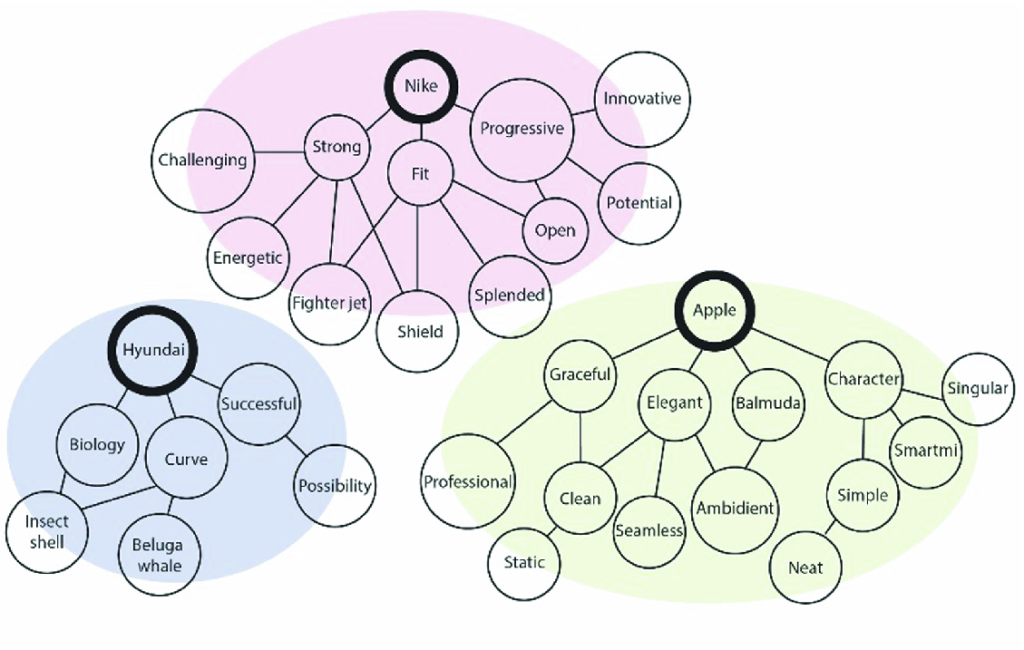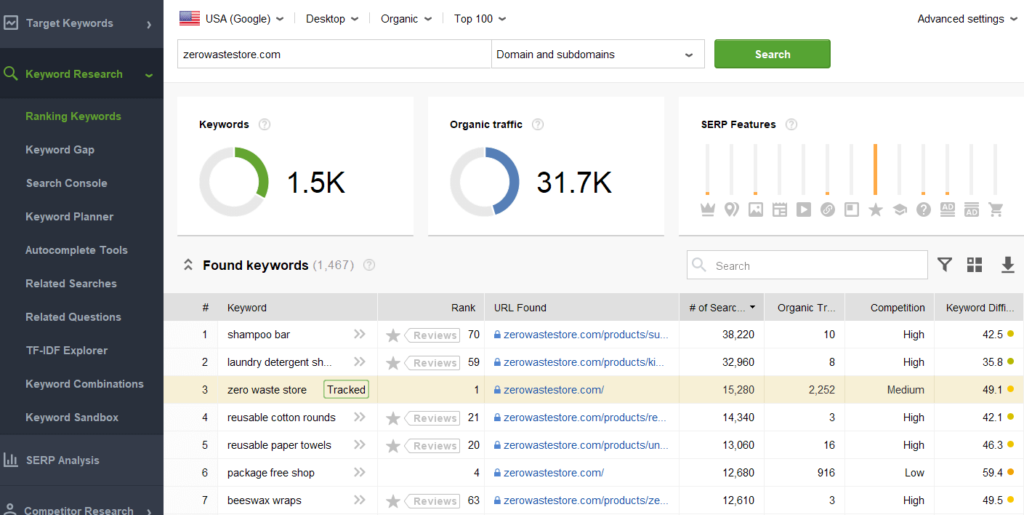
Search Engine Optimization (SEO) plays a significant role in the success of your digital marketing efforts. Keywords form the foundation of your SEO strategy. They are the drivers that can get your website in the top searches in organic search results. However, focusing on just a few keywords does not seem to be effective. A well-planned keyword mapping strategy can help optimize your website and provide your target audience with the content they are looking for.
The keyword mapping process is pretty simple, but it does require some practice to learn how to do proper keyword research.
Let’s get you acquainted with keyword mapping in detail.
What is Keyword Mapping?

Keyword mapping is the process of planning and researching keywords and determining where they should be placed on your website. In the process, you assign or “map” targeted keywords to each page on your site. Primarily, keyword maps include the main keyword for the page’s primary topic and a series of secondary keywords or keyword variations for support. Google ranks each page separately instead of ranking your whole website. It requires optimizing each page for targeted keywords to achieve higher rankings.
Keyword mapping also makes content creation easier as it helps determine the best places to group keywords together logically. Moreover, it enables you to remember what keywords are used in what section of your page. This information helps your content creation team formulate topics much better.
Certain aspects of the page, such as the page title, meta-data, and a gist of what the page should cover, are also part of keyword maps. There is no fixed format for creating a keyword map. Most digital marketers create a spreadsheet on this information and refer to it during content creation.

Thus, your keyword mapping strategy is like a treasure map to reach the desired first-page search positions in the SERPs.
Why is keyword mapping vital for SEO?
Keyword mapping plays an important role in planning your SEO strategy. The search engines have become smart enough to see if you’re just doing keyword stuffing. Their algorithms have now been updated to look for keywords that match users’ search intent. Therefore, it is crucial to identify the right keywords to attract the right kind of traffic to your page.
To implement an effective content marketing strategy, you need to be ready with a y plan. It offers the following benefits:
- It helps in keyword organization
Keyword mapping is of great help in content creation. It allows you to pay attention to which keywords are primary and supporting for each page of your website. This can help you to create relevant content for your audience.
- It avoids duplicate content
A keyword map guides the content creation team by telling them where a specific topic can be placed based on its coordinating keywords. This prevents you from creating content whose keywords compete with that of another similar content piece for the same position in search results. This is called keyword cannibalization, where your pages compete against each other in the SERPs.
- It addresses loopholes in your content marketing strategy
Content creation can be an overwhelming task as you have to be updated so that you don’t miss out on anything important for your target audience. A keyword map has all the relevant topics to be covered. You can easily find any gaps that need to be filled in your content strategy.
- It helps better communicate your content needs
Keyword mapping makes you aware of the main topic, primary keywords, and supporting keywords even before writing the content piece. This ensures that the content aligns with the tone and structure you want. Thus, a keyword map helps communicate your content needs more clearly to your content team or any outside agency you’ve hired.

How to do Keyword Mapping?
You might have some obvious keyword choices, but these are probably the most competitive terms. You are wasting your time and efforts if you’re just focusing on these terms for every website page. Preparing a keyword map can take some extra time initially, but having all your content information in a central location can save substantial amounts of your efforts later.
Here are the steps to devise a keyword mapping strategy for your website:
1. Prepare a list of target keywords
The first step is keyword research, where you identify all existing well-performing keywords and new keywords you want to target. Tools like Google Search Console can determine which keywords bring the most traffic to your site, and Google analytics can help identify new keywords. Add the new keywords to your keywords list.
You can even explore the list of keywords used by your competitors and incorporate them into your SEO strategy. TF-IDF Explorer is a tool used for finding your competitors’ ranking keywords.
After going through all these sources, you will have the first draft of your keyword list. Filter your list to exclude keywords that are irrelevant or have low search volumes.

2. Sort keywords by topic
To assign keywords to specific pages, you need to categorize them into certain groups. You can classify these keywords based on the topic and target each group with one page.
However, sometimes within a topic group, there are keywords with conflicting search intent. So, you cannot target such keywords for one single page. Thus, smaller groups based on keywords’ search intent need to be created. Search intent can be categorized into navigational, informational, commercial inquiry, and transactional. Refine your list of keywords further by forming these groups.
3. Double-check the search intent on SERPs
Sometimes, Google gives different search results for keywords belonging to the same group. If this happens, you are targeting keywords with varying intents of search with one specific page, which will not succeed in improving your search rankings. Thus, you need to figure this out before optimizing a page for selected keywords.
To do so, make sure that your search intent-based groups of keywords align with Google. You can double-check the exact SERPs, and if the keywords trigger different search results, you cannot place them in the same group.
Keywords should trigger at least five common pages on SERP to be placed in the same group. After conducting this SERP research, regroup the listed keywords for the proper optimization.
4. Sort keyword groups by difficulty
Some keywords are more accessible to rank than others, attracting good traffic volumes when placed on faraway pages. At the same time, some need to be placed on high-authority pages to bring any traffic at all. Thus, keyword difficulty is a factor that should be considered when assigning keywords to pages. You can divide the keywords into two or three difficulty levels to group them.
5. Import your keywords
Keywords can be assigned or mapped to pages manually using Excel or Google sheets. But this will be very cumbersome and time-consuming. To make this task easy and quick, you can use WebSite Auditor. It allows you to import all the keywords and execute keyword research and mapping procedures faster.
6. Map keywords to pages
This is a complex step. You can still use WebSite Auditor to map keywords to pages, but it is prone to mistakes. Thus, it is suggested to check the pages for keywords manually.
Different keywords have different search intents, so they are used on other pages. Match the keyword’s search intent with that of the page and if it doesn’t match, map this keyword to a new page.
Another factor that should be considered while mapping keywords is a page’s click depth. It tells how much closer a page is to your homepage or how many steps are required to reach it from the homepage. It is suggested that more difficult keywords should be placed on pages with lesser click depth.
Sometimes, one keyword group is mistakenly mapped to many pages, which leads to these pages competing with each other rather than your competitors. This is known as keyword and traffic cannibalization, resulting in lower rankings for such cannibalized pages. So, to avoid this conflict, map a keyword to a single page only and unmap the other less relevant pages.
7. Optimize your pages for the mapped keywords
Once you have mapped a keyword group to a page, optimize the page’s content for those new keywords. SEO tools such as WebSite Auditor can help page optimization and suggest the optimal number of words for the page, how many keywords to add, and which topics to cover. Thus, create the content outlined in your keyword map.
Keyword mapping is an ongoing process. You have to keep on adding something new as your website keeps expanding and trends keep on changing. A keyword map is like a guide that ensures that your whole team is on the same page about what goes on each page of your website. It reveals the weaknesses of your content strategy and helps you to address them timely.
Developing a keyword mapping strategy will initially take a lot of time, but it is worthwhile, evident from the great SEO results.
Key Takeaways
- Keyword mapping is identifying and assigning relevant keywords to each page on your website to optimize them, allowing search engines to analyze the relevance of each page and ultimately provide it to the users looking for such information.
- Keyword mapping can offer several benefits for SEO, such as:
- It keeps your keywords organized.
- It prevents keyword cannibalization by avoiding duplicate content.
- It gives a complete picture of your content marketing strategy and helps you refine it.
- It communicates your content expectations to your in-house content creation team or any outside agency.
- Here is a step-by-step guide to developing a keyword mapping strategy.
- Start by making a list of target keywords by performing keyword research.
- Categorize those keywords based on topics and the search intent of users.
- Double-check the search intent-based grouping of keywords on SERPs to see if they trigger common pages.
- Group the keywords according to their difficulty levels.
- You can either assign keywords to your pages manually or import the keywords list using WebSite Auditor and then proceed with mapping.
- Map keywords to pages based on search intent, click depth of pages, and keyword cannibalization.
- Optimize the content of your pages for the mapped keywords.
FAQs
Keyword mapping is identifying and assigning keywords to different pages of your website. It plays an important role in SEO and helps the search engines understand each page’s relevance for search intent.
The major benefits of keyword mapping are:
1. It helps in organizing the keywords for each page
2. It avoids the creation of duplicate content
3. It makes it easier to communicate your content expectations to the content team.
4. It allows you to identify and address your content marketing strategy gaps.
A keyword intent, also known as search intent and user intent, is the purpose behind a search query. Keyword Intent Marketing describes why users are searching for a particular phrase and the information they intend to get.
When a keyword group is mapped to several pages of your website, those pages start competing with each other instead of the competitors’ pages for higher search rankings. This leads to a lower ranking for such pages. This phenomenon is called keyword cannibalization.
Latest Blogs
Explore how Google’s 2025 AI search updates triggered ranking chaos. Learn actionable strategies to adapt your SEO for AI Overviews, zero-click searches, and SERP volatility. Stay ahead now.
Learn how to rank on AI search engines like ChatGPT, Perplexity, and Gemini by optimizing your content for authority, structure, and relevance. Stay ahead in AI-driven search with this strategic guide.
Explore the best healthcare SEO services for your medical practice. Improve online visibility and effectively reach more patients in need of your services.
